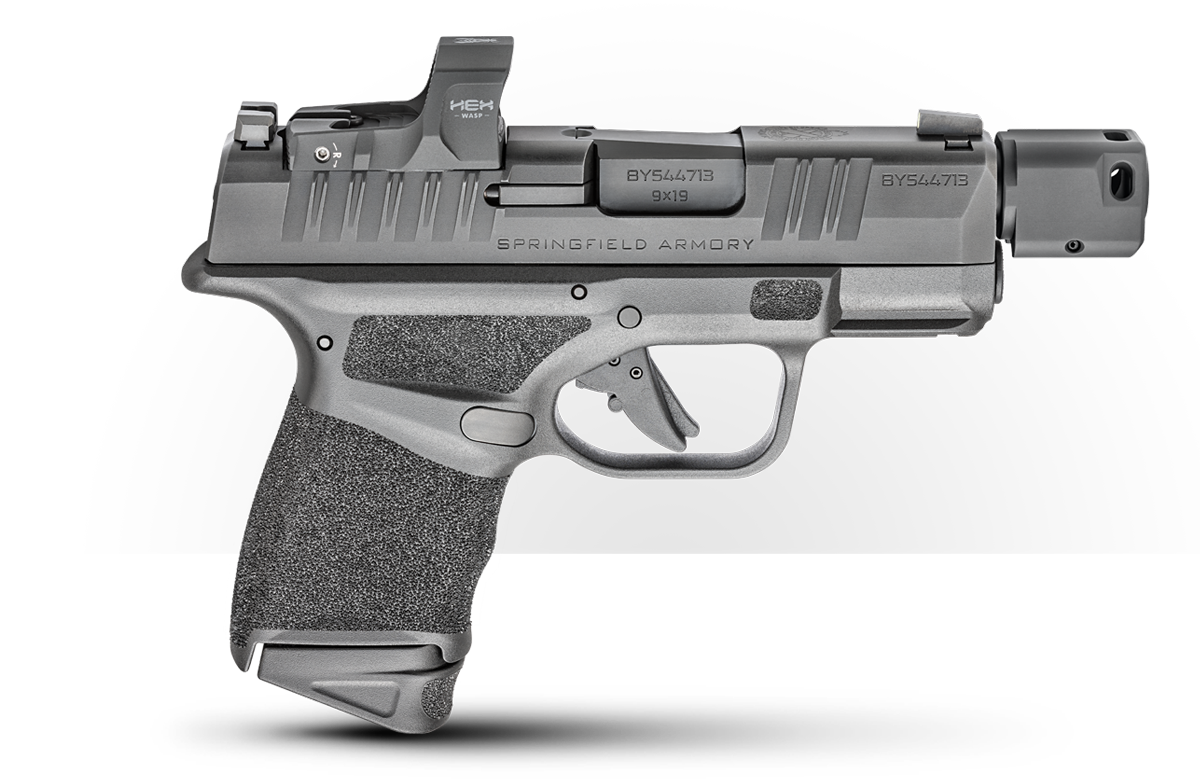We spend a large part of our lives in and around vehicles. Statistically, you are more likely to encounter a self-defense situation in or around your car than inside your home. This poses a litany of challenges, namely, how to effectively use your vehicle for cover. Proper use of cover can mean the difference in surviving a potential deadly threat or not.
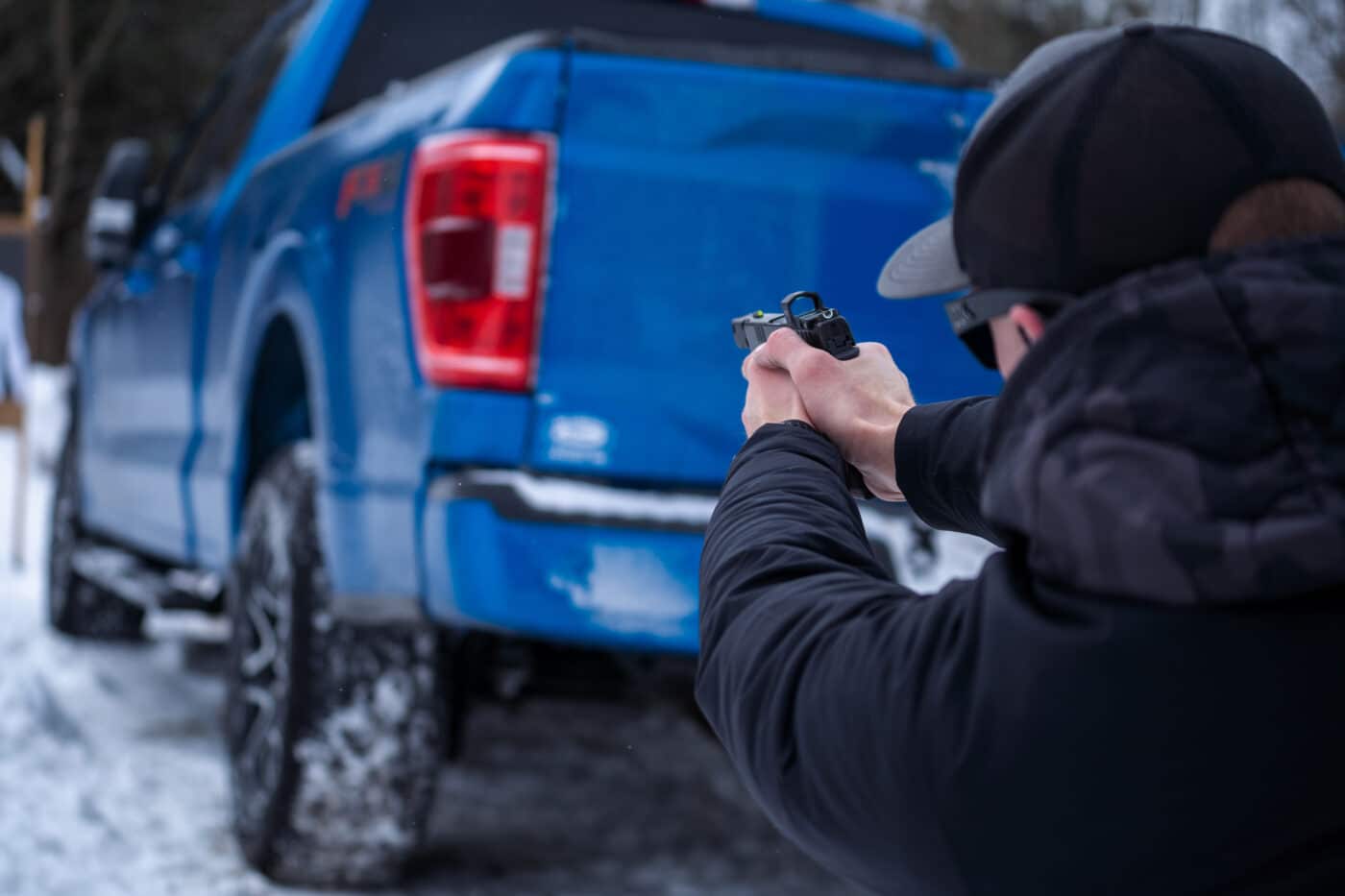
We want to thank TrueShot for sending us ammo to use in this article. They shipped us a few hundred rounds of Blazer Brass to run through our Hellcat RDP for this training video.
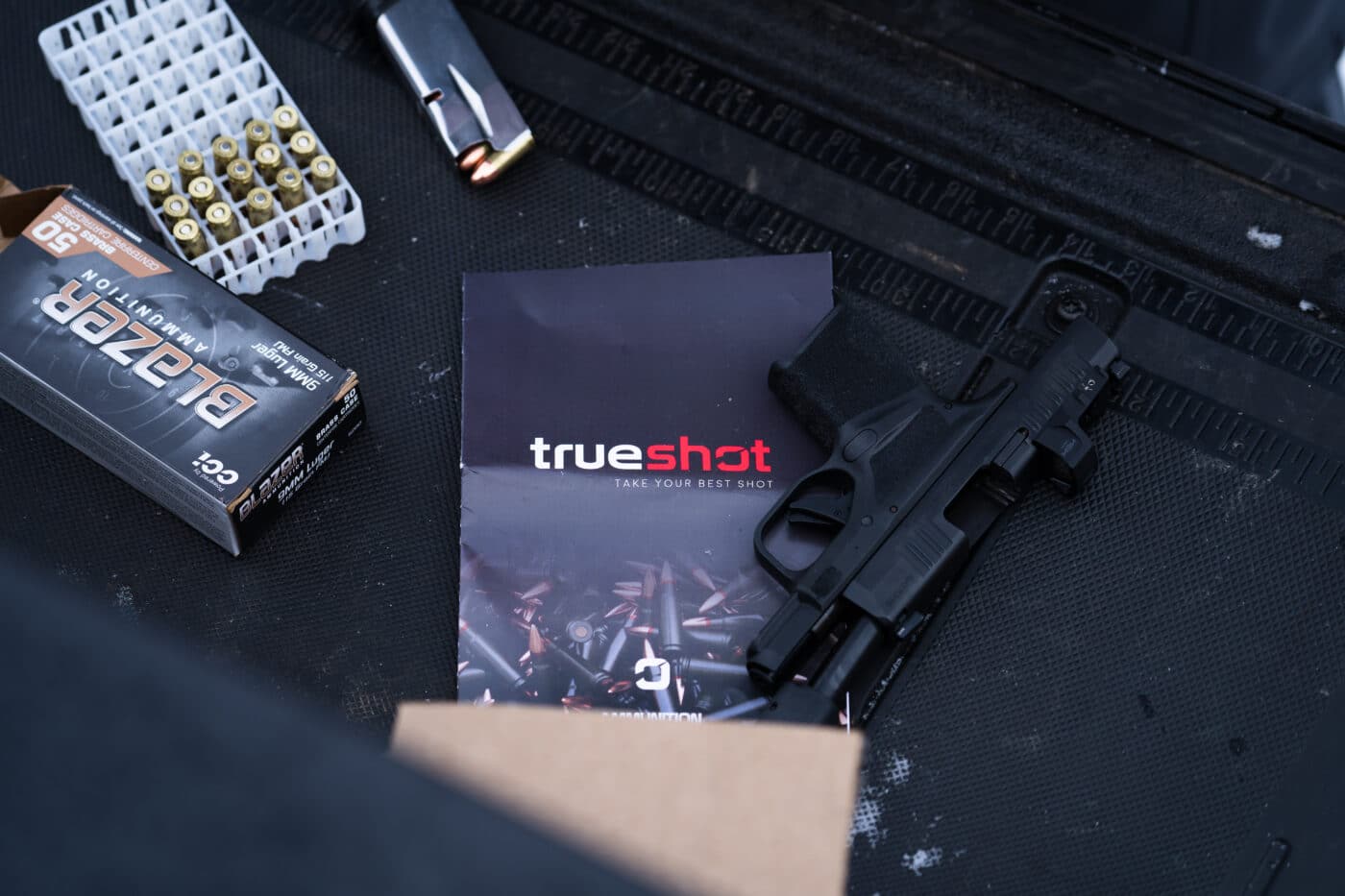
Protection from Gunfire
Before we dive into this, we must differentiate between cover and concealment. In layman’s terms, concealment merely hides your profile and will not protect you from gunfire. Cover has the ability to stop bullets and protect you from gunfire.
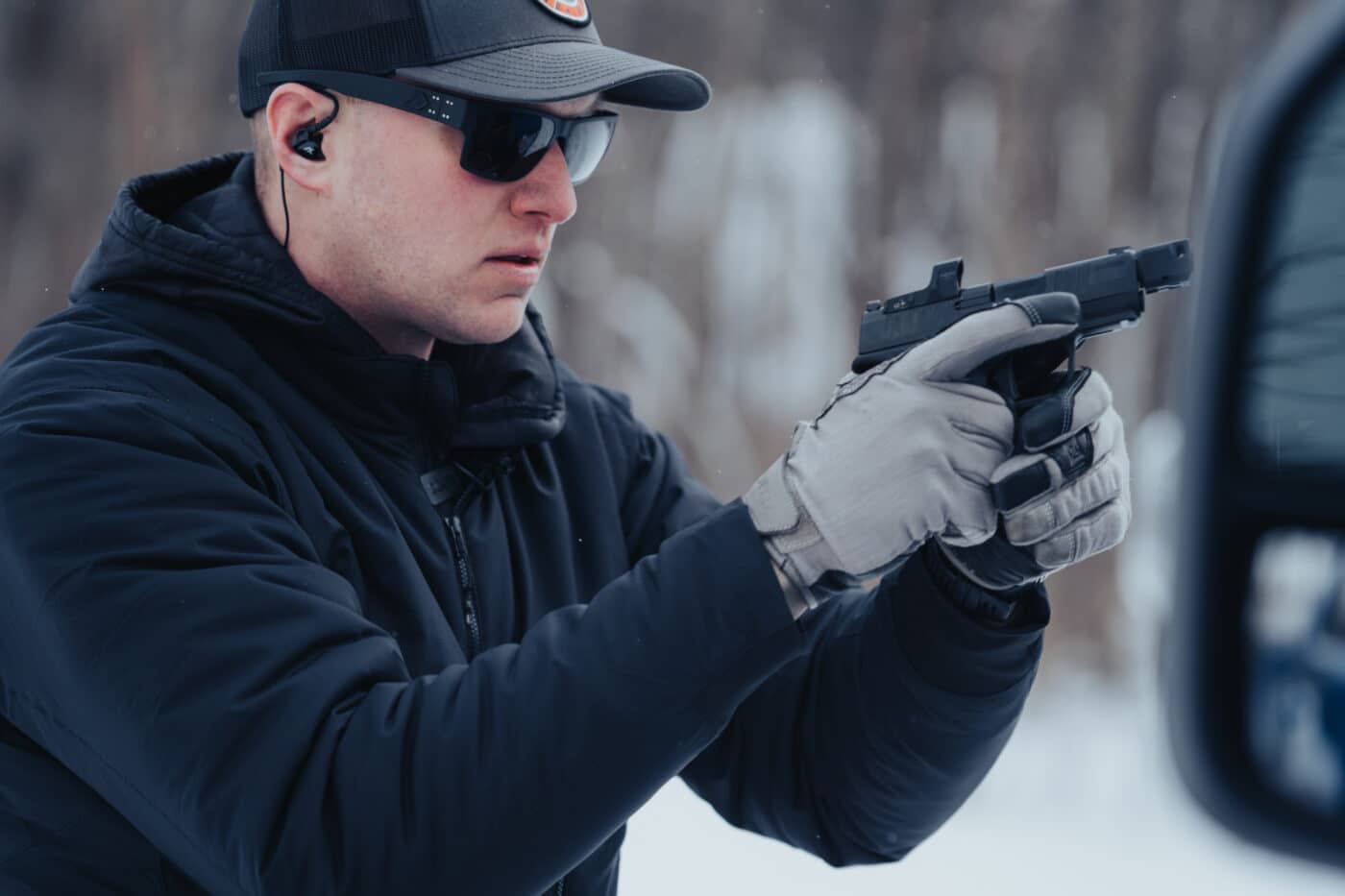
So, concealment will hide you and cover will protect you. Motor vehicles can be broken down into multiple different areas of cover, some of which are more effective than others.
First things first, if you find yourself in a gunfight and you are in the car, GET OUT! Make it fast. Law enforcement shooting statistics show us survivability goes up drastically once the officer is out of the vehicle.
[Learn more in this article on cover vs concealment.]
Using a Vehicle for Cover
If you exit the vehicle and you are at the side of it, remember you want as much metal or material between you and the threat as possible. The engine block area or the first 1/3rd of the vehicle will be the most effective. This area has more material in it than the others and will provide the greatest volume of cover.
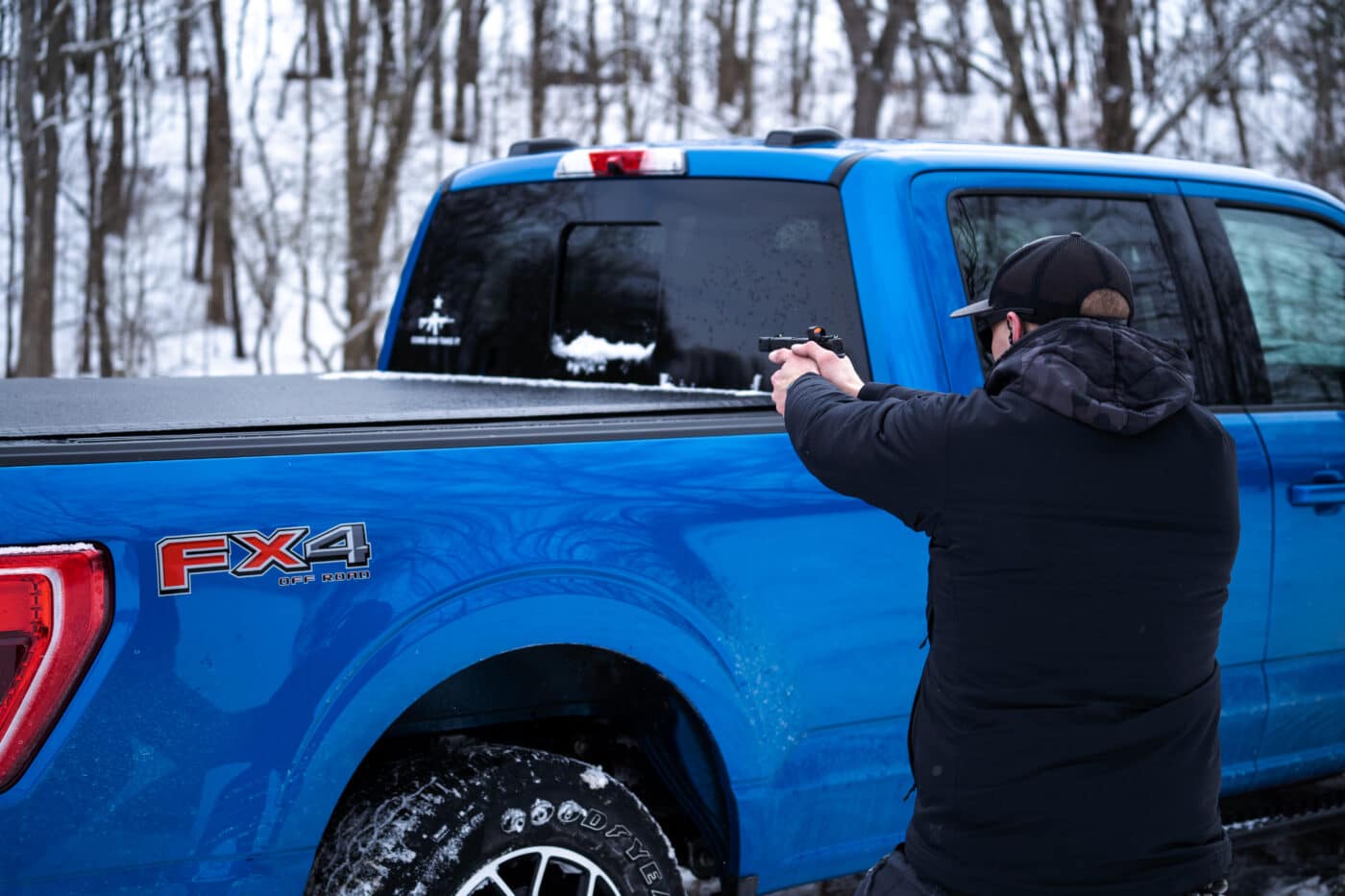
Moving on to the mid-section of the car, you have your doors. Doors, if you exit the vehicle, are nothing but concealment. Doors alone in most cases do not stop bullets, especially not a 9mm. I know we see it in movies and shows, where the good guys hide behind the doors from gunfire, but this is incredibly unrealistic and a potentially deadly move.
Looking at the side of the car, you have pillars. There are three pillars in a car body — the A, B and C pillars. The “A” is the diagonal one that supports the windshield and mirror. With all the pillars, you want to stack them. This means to horizontally place the opposing pillar in front of the one you are behind.
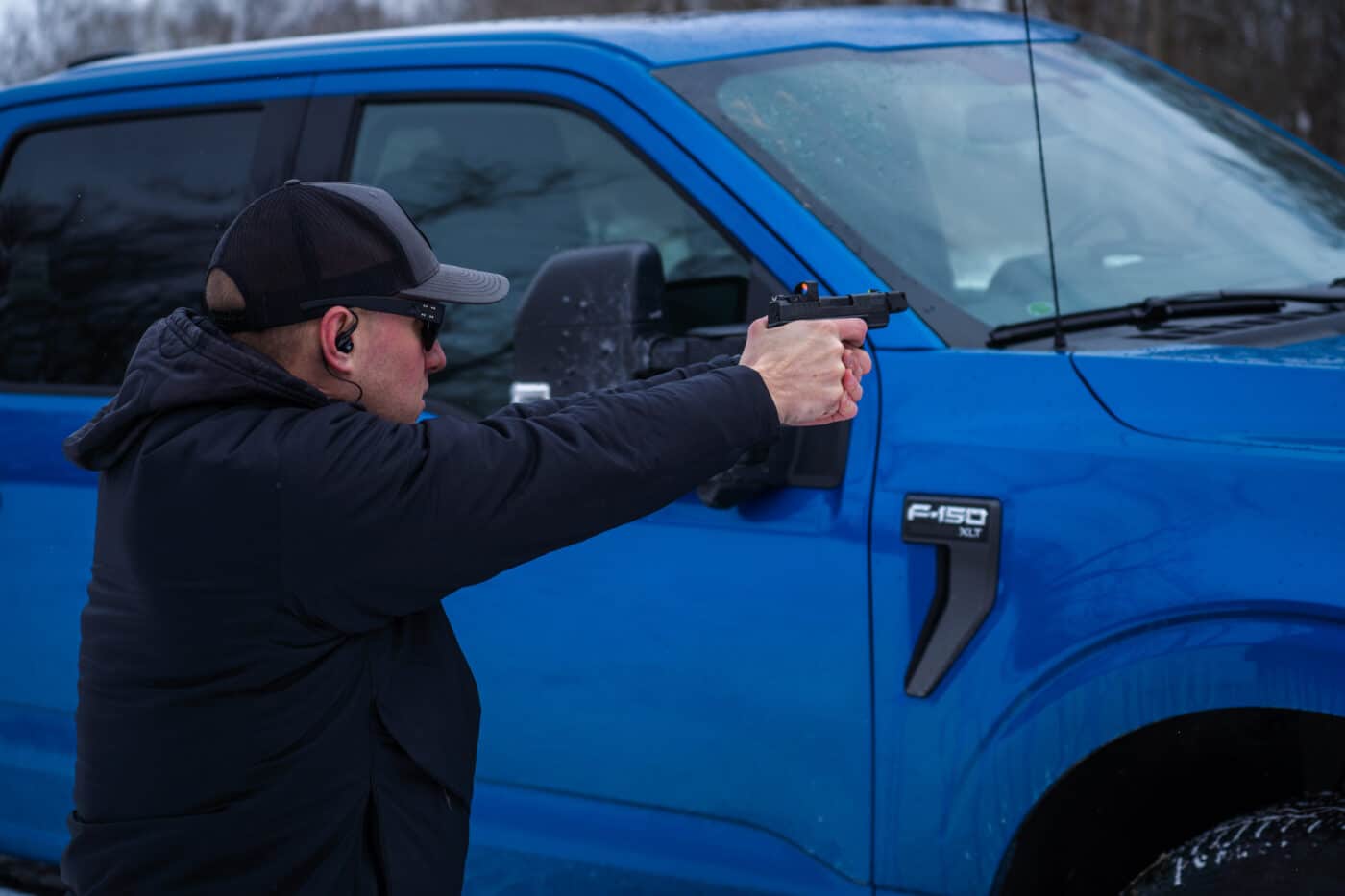
The “B” pillar is in the middle, which connects the front and rear doors of a four-door vehicle. The “B” pillar will contain the most amount of metal and material in nearly any four-door vehicle. You have the high-strength steel or aluminum body which is supported in the middle by the “B” pillar. The “B” pillar turns into a makeshift roll-bar in a roll-over type crash. It’s designed by automakers to be the strongest part of the passenger compartment for this reason.
[For additional reading, don’t miss our article Shooting from Cover.]
This is a good thing for defense situations because in testing, the “B” pillar, when stacked, has been shown to stop multiple specialized armor-piercing rounds from .308 caliber rifles. The “B” pillar is not wide, but it will likely be just wide enough for you to exchange gunfire while maintaining cover.
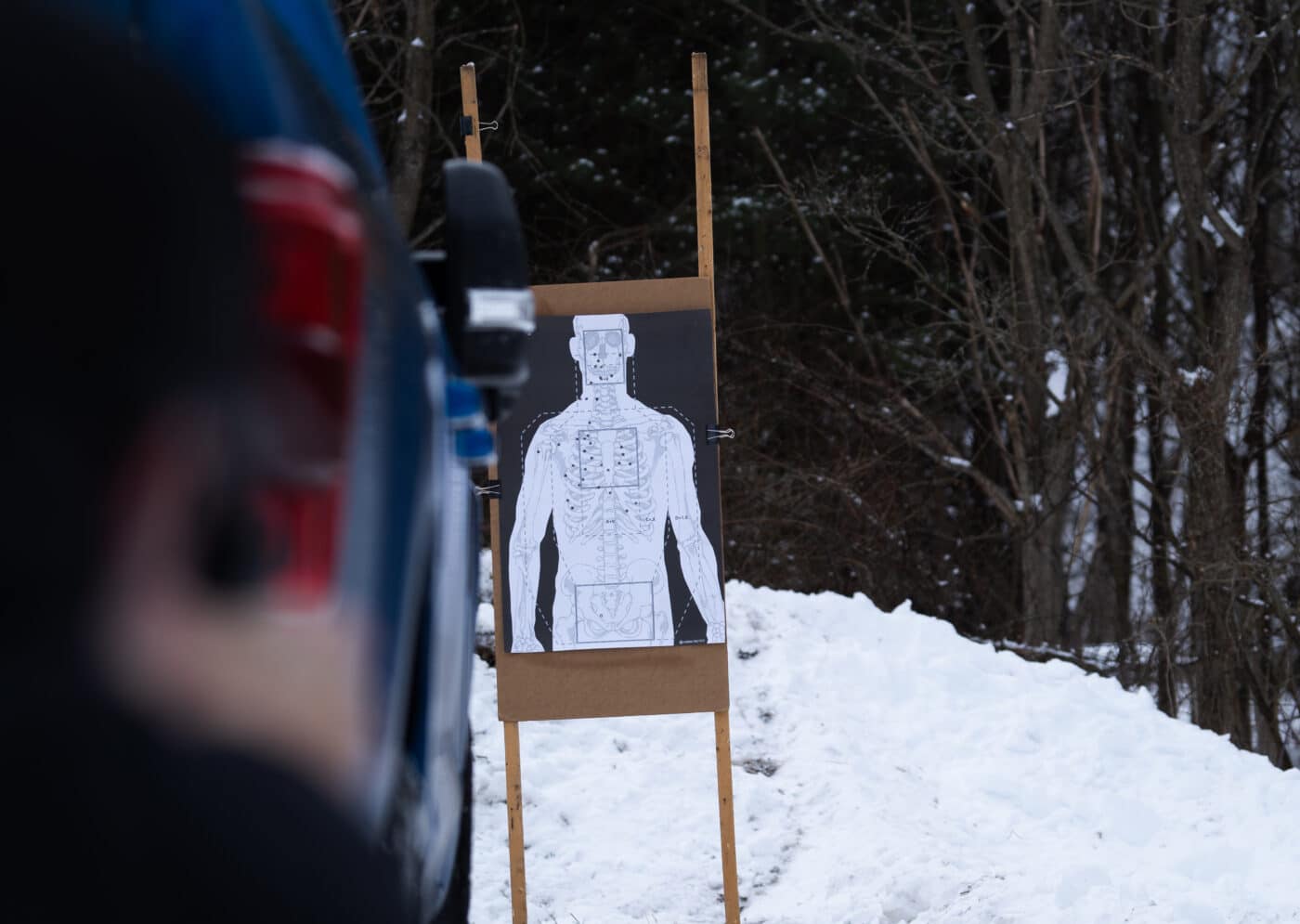
The “C” pillar will be the rearmost passenger compartment strut, which runs diagonally on passenger cars and vertically on trucks. Oftentimes it will lead to the rear wheel on most vehicles.
The final pillar position brings us to the rearmost portion on the side profile of the vehicle, being the rear wheel and wheelwell area. In this area, you will seek to use the wheel area for cover. Wheels, when combined with the opposite side, can provide excellent cover. They are usually made of thick metal, and the area above them on the car body/frame itself is reinforced with more material for strength. This means a greater chance to stop bullets.
Looking Forward and Back
Now that we have covered how to use the side profile of a vehicle for cover, how do you use the front or back? Really, there is no bad position from the front or back of the car. The entire length of the car and all of its components are placed between you and the gunfire. There are certainly more advantageous spots from the rear or front, being the right or left side.
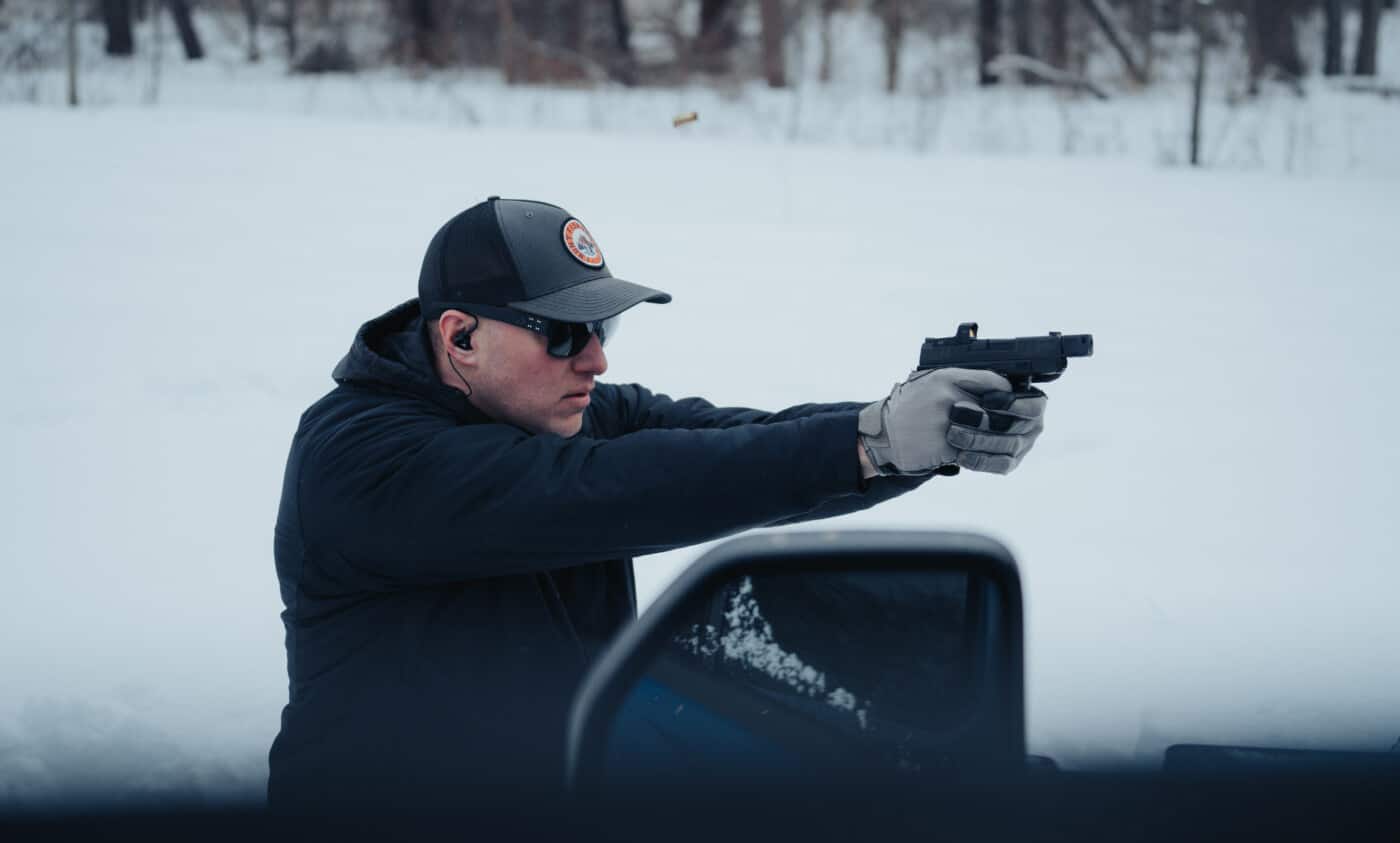
To effectively use cover, remember you have to stand back from it. This can usually be 4-6 feet depending on the position of the threat. Standing in the middle and exchanging rounds through the rear window, seats and windshield is not ideal and incredibly hard to connect with effective shots — especially if you are trying to be accountable for all shots fired.
Conclusion
With all of these positions of cover around a vehicle, you will have a multitude of areas to use if you must engage in a gunfight with an attacker. As a defender, you have to remain mobile. If one piece of cover is unusable, you will need another to use. Shooting in or around vehicles poses a unique set of challenges all in itself, but if you fail to utilize cover it could cost you everything.
Editor’s Note: Please be sure to check out The Armory Life Forum, where you can comment about our daily articles, as well as just talk guns and gear. Click the “Go To Forum Thread” link below to jump in and discuss this article and much more!
Join the Discussion
Featured in this video
Continue Reading
Did you enjoy this video?

 195
195




